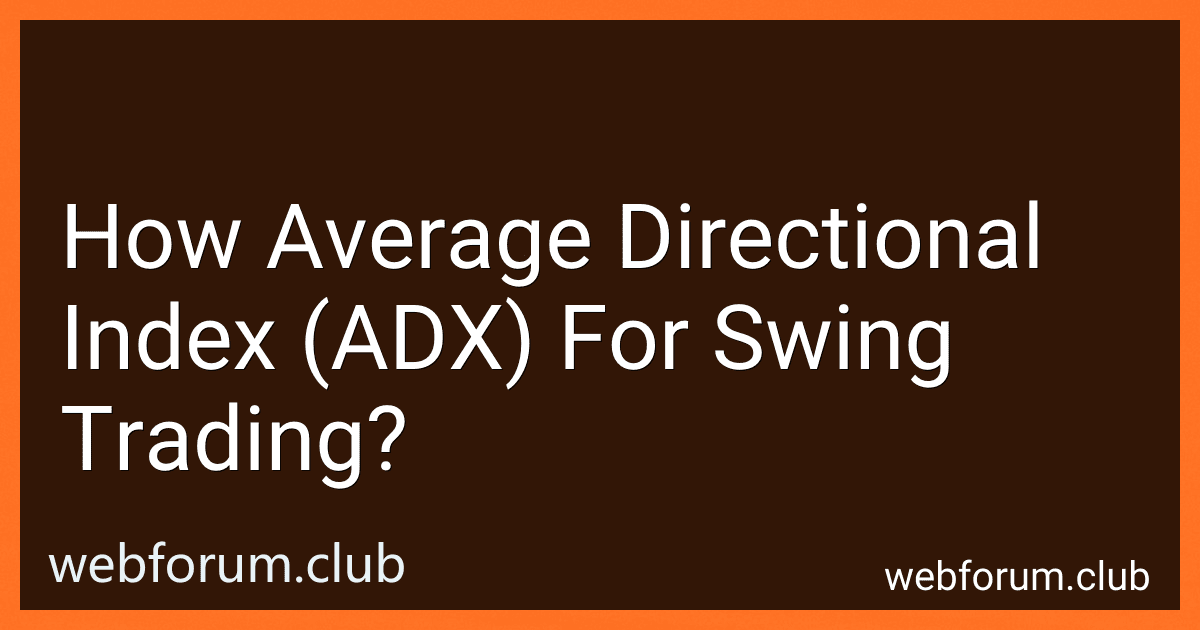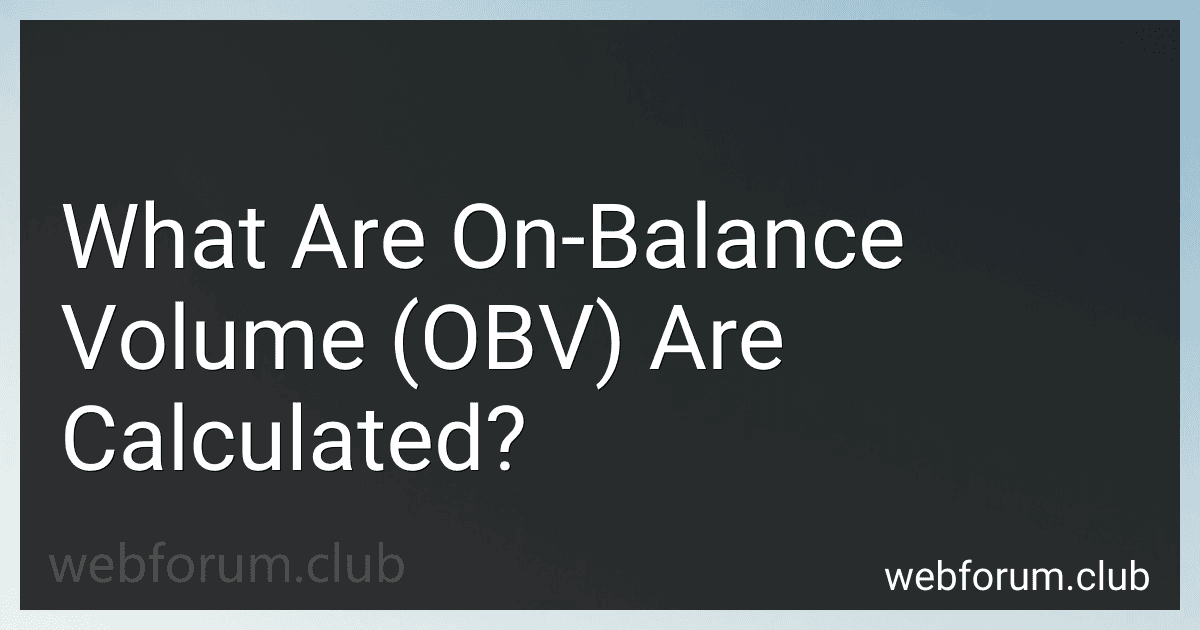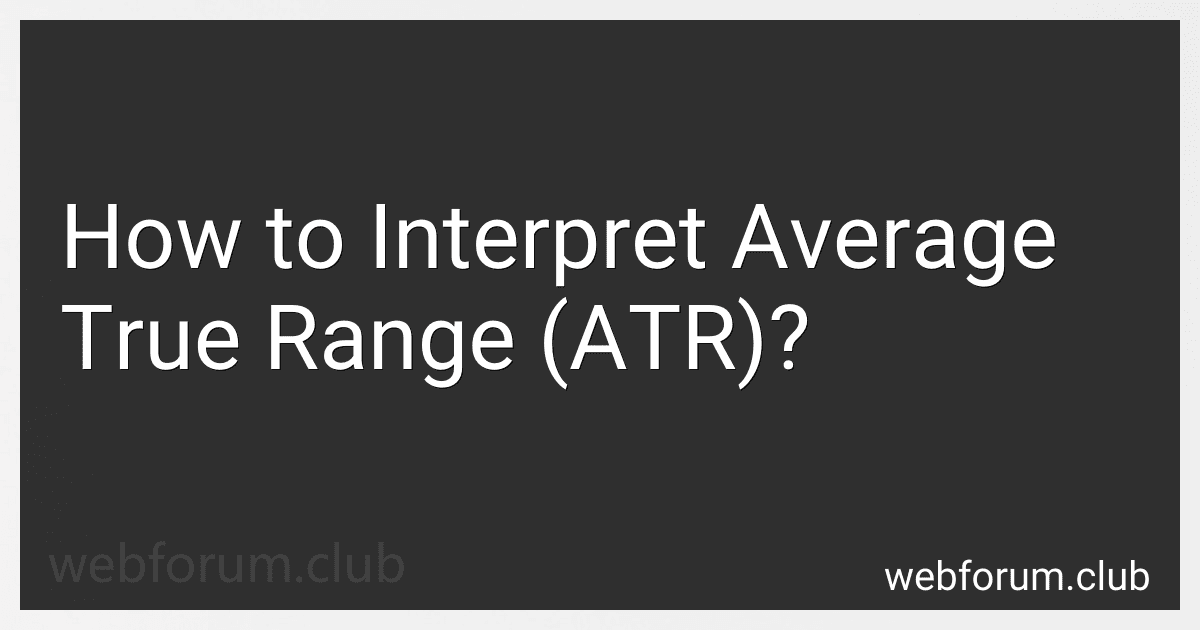WebForum
-
 11 min readTo use Average True Range (ATR) for swing trading, it is important to first understand what ATR is. ATR is a technical indicator that measures market volatility by calculating the average range between high and low prices over a specified period of time.When using ATR for swing trading, it can help determine the ideal position for stop-loss orders and the size of potential price moves.
11 min readTo use Average True Range (ATR) for swing trading, it is important to first understand what ATR is. ATR is a technical indicator that measures market volatility by calculating the average range between high and low prices over a specified period of time.When using ATR for swing trading, it can help determine the ideal position for stop-loss orders and the size of potential price moves.
-
 11 min readThe Relative Strength Index (RSI) is a popular technical indicator used in financial markets to analyze the strength and momentum of price movements. It is designed to measure the speed and change of price movements, helping traders identify overbought and oversold conditions. The RSI is based on the concept of comparing the average gains and losses over a specified period, typically 14 periods.The RSI ranges from 0 to 100 and is plotted as a line graph.
11 min readThe Relative Strength Index (RSI) is a popular technical indicator used in financial markets to analyze the strength and momentum of price movements. It is designed to measure the speed and change of price movements, helping traders identify overbought and oversold conditions. The RSI is based on the concept of comparing the average gains and losses over a specified period, typically 14 periods.The RSI ranges from 0 to 100 and is plotted as a line graph.
-
 8 min readThe Average Directional Index (ADX) is a technical indicator commonly used in swing trading to measure the strength of a trend. Unlike other indicators that provide information on the direction of a trend, the ADX focuses on the strength or intensity of the trend. It was developed and introduced by J. Welles Wilder Jr. in his book "New Concepts in Technical Trading Systems.
8 min readThe Average Directional Index (ADX) is a technical indicator commonly used in swing trading to measure the strength of a trend. Unlike other indicators that provide information on the direction of a trend, the ADX focuses on the strength or intensity of the trend. It was developed and introduced by J. Welles Wilder Jr. in his book "New Concepts in Technical Trading Systems.
-
 5 min readThe Chande Momentum Oscillator (CMO) is a technical analysis indicator developed by Tushar Chande, a renowned quant trader and author. It measures the momentum of a financial instrument by calculating the difference between the sum of gains and the sum of losses over a specific period.Unlike other momentum oscillators that use traditional price changes, the CMO uses the concept of "accumulative swing index" to determine price momentum.
5 min readThe Chande Momentum Oscillator (CMO) is a technical analysis indicator developed by Tushar Chande, a renowned quant trader and author. It measures the momentum of a financial instrument by calculating the difference between the sum of gains and the sum of losses over a specific period.Unlike other momentum oscillators that use traditional price changes, the CMO uses the concept of "accumulative swing index" to determine price momentum.
-
 10 min readOn-Balance Volume (OBV) is a technical analysis indicator used in finance to measure the positive and negative volume flow of a security over a specified period. It provides insights into the strength of buying and selling pressure in the market. Rather than focusing solely on price movements, OBV takes into account the volume traded during price changes.To calculate the OBV, the following steps are followed without using list items:Start with an initial OBV value of zero.
10 min readOn-Balance Volume (OBV) is a technical analysis indicator used in finance to measure the positive and negative volume flow of a security over a specified period. It provides insights into the strength of buying and selling pressure in the market. Rather than focusing solely on price movements, OBV takes into account the volume traded during price changes.To calculate the OBV, the following steps are followed without using list items:Start with an initial OBV value of zero.
-
 11 min readBollinger Bands are a technical analysis tool that traders use to understand market volatility and potential price movements. This guide will provide you with an overview of Bollinger Bands and how beginners can use them effectively.Bollinger Bands consist of three lines plotted on a price chart. The middle line is a simple moving average (SMA), typically set to a 20-day period.
11 min readBollinger Bands are a technical analysis tool that traders use to understand market volatility and potential price movements. This guide will provide you with an overview of Bollinger Bands and how beginners can use them effectively.Bollinger Bands consist of three lines plotted on a price chart. The middle line is a simple moving average (SMA), typically set to a 20-day period.
-
 9 min readThe Hull Moving Average (HMA) is a popular technical analysis indicator that is used to determine the direction of a trend and filter out market noise. It was developed by Alan Hull and aims to overcome the limitations of traditional moving averages by providing a smoother and more responsive trend line.The HMA is based on the weighted moving average (WMA) but adds a few additional calculations to further improve accuracy.
9 min readThe Hull Moving Average (HMA) is a popular technical analysis indicator that is used to determine the direction of a trend and filter out market noise. It was developed by Alan Hull and aims to overcome the limitations of traditional moving averages by providing a smoother and more responsive trend line.The HMA is based on the weighted moving average (WMA) but adds a few additional calculations to further improve accuracy.
-
 7 min readThe Average True Range (ATR) is a technical indicator that measures market volatility. It provides insights into the price range and volatility of an asset. Interpreting ATR can help traders and investors in making decisions related to position sizing, setting stop-loss levels, and identifying potential trend reversals.ATR is calculated by taking the average of the true range values over a specified period.
7 min readThe Average True Range (ATR) is a technical indicator that measures market volatility. It provides insights into the price range and volatility of an asset. Interpreting ATR can help traders and investors in making decisions related to position sizing, setting stop-loss levels, and identifying potential trend reversals.ATR is calculated by taking the average of the true range values over a specified period.
-
 7 min readThe Relative Strength Index (RSI) is a widely used momentum oscillator that measures the speed and change of price movements. It is a technical analysis tool that helps traders identify overbought or oversold conditions in a market. The RSI is plotted on a graph with values ranging from 0 to 100.The RSI calculates the strength of price movements by comparing the average gains versus the average losses over a given period, which is typically 14 days.
7 min readThe Relative Strength Index (RSI) is a widely used momentum oscillator that measures the speed and change of price movements. It is a technical analysis tool that helps traders identify overbought or oversold conditions in a market. The RSI is plotted on a graph with values ranging from 0 to 100.The RSI calculates the strength of price movements by comparing the average gains versus the average losses over a given period, which is typically 14 days.
-
 21 min readThe stock market crash in 1929 was primarily caused by a combination of several economic factors:Speculation and Overvalued Stocks: In the 1920s, there was a widespread belief that the stock market would continue to rise indefinitely. Many investors
21 min readThe stock market crash in 1929 was primarily caused by a combination of several economic factors:Speculation and Overvalued Stocks: In the 1920s, there was a widespread belief that the stock market would continue to rise indefinitely. Many investors
-
 11 min readThe Detrended Price Oscillator (DPO) is a technical analysis indicator that helps traders identify and measure cyclic patterns in the price of an asset. It aims to eliminate or minimize the effects of the overall trend, allowing traders to focus on shorter-term cycles.The DPO calculates the difference between a past price and a moving average, shifted or displaced backwards by a certain number of periods.
11 min readThe Detrended Price Oscillator (DPO) is a technical analysis indicator that helps traders identify and measure cyclic patterns in the price of an asset. It aims to eliminate or minimize the effects of the overall trend, allowing traders to focus on shorter-term cycles.The DPO calculates the difference between a past price and a moving average, shifted or displaced backwards by a certain number of periods.